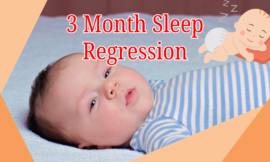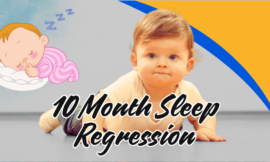Joint attention is a crucial milestone in early childhood development. It refers to the shared focus of two individuals on an object or activity, usually initiated by eye contact, gestures, or verbal communication. This skill is essential for developing social interactions, language acquisition, and cognitive abilities in young children. However, many parents and caregivers may wonder how to foster joint attention effectively, especially in toddlers who may struggle with focus and attention.
In this blog post, we will explore what joint attention is, why it matters for child development, and seven powerful ways you can enhance joint attention in toddlers.
What is Joint Attention?
Joint attention is when two or more people focus on the same object, activity, or event, and it involves a shared understanding between individuals. For instance, when a parent and child look at a toy simultaneously while the parent names the toy, they are engaging in joint attention. This concept is fundamental for social interaction, communication, and language development, as it teaches children how to engage with others, interpret their behavior, and learn through observation.
Joint attention typically develops during the first year of life, often emerging as early as six months. It begins with a baby following their caregiver’s gaze or pointing toward an object. By 12 to 18 months, joint attention becomes more sophisticated, with the child being able to direct someone’s attention through gestures or words.
Why is Joint Attention Important for Child Development?
The development of joint attention is closely linked to other critical areas of a child’s growth, particularly in social and cognitive skills. It’s one of the first signs that a child is learning how to communicate and interact with others meaningfully.
Some of the key benefits of joint attention include:
- Language Development: Joint attention helps children connect words to objects and actions, laying the foundation for vocabulary growth.
- Social Skills: It teaches children how to share experiences, interpret social cues, and engage in meaningful interactions.
- Cognitive Development: Joint attention enables children to understand cause-and-effect relationships, problem-solving, and learning through imitation.
Joint attention is also an important predictor of later communication skills and social competence. Children who develop strong joint attention skills tend to have better outcomes in areas like language acquisition and peer relationships.
Joint Attention and Autism – What You Need to Know
Children with autism spectrum disorder (ASD) often experience challenges with joint attention. Difficulty in establishing joint attention is one of the early indicators of autism and can be noticeable in infants and toddlers. For example, a child with autism may not follow a parent’s gaze, point to objects, or respond to gestures that are typically part of joint attention.
In autism, the lack of joint attention may manifest in:
- Reduced eye contact with others
- Difficulty in sharing enjoyment or showing interest in what others are doing
- Challenges in initiating or responding to joint attention behaviors like pointing, showing, or giving objects
Therapies designed to improve joint attention, such as Applied Behavior Analysis (ABA) and speech therapy, can play a significant role in helping children with autism develop this essential skill.
How to Improve Joint Attention in Toddlers
Improving joint attention in toddlers requires patience and engagement. Here are seven effective strategies to help foster this important developmental skill:
- Use Gestures: Simple gestures like pointing, waving, or clapping can help draw your toddler’s attention to an object or action.
- Play Peek-a-Boo: This classic game encourages eye contact and turn-taking, both key components of joint attention.
- Follow Their Lead: Engage in activities that already interest your toddler. Whether they’re playing with blocks or reading a book, show interest and participate.
- Name Objects: When your child shows interest in an object, name it out loud. This helps them associate the word with the object and promotes joint focus.
- Use Eye Contact: Encourage your toddler to look at your eyes during interactions. This helps establish the social connection that’s crucial for joint attention.
- Be Patient: Allow your toddler time to process and respond during joint attention activities. Don’t rush through tasks.
- Play Turn-Taking Games: Simple games like rolling a ball back and forth or stacking blocks can improve attention and focus while fostering shared interaction.
These activities are fun for both you and your toddler and encourage natural development of joint attention.
Joint Attention Activities for Toddlers
There are many enjoyable activities parents and caregivers can incorporate into daily routines to enhance joint attention. Here are some tried-and-true activities:
- Storytime with Pointing: When reading a book together, point to the pictures and encourage your child to do the same.
- Interactive Toys: Use toys that require interaction, such as a toy phone or a toy car, where both you and your child can take turns.
- Singing Songs with Actions: Songs like “Itsy Bitsy Spider” or “If You’re Happy and You Know It” involve movements that help establish joint attention.
- Bubble Play: Blowing bubbles and asking your child to pop them encourages them to track the bubbles with their eyes and engage with you in a shared activity.
By incorporating these activities regularly, you can help your child develop joint attention in a fun and stress-free way.
Stages of Joint Attention Development
Joint attention develops in stages, beginning with simple eye contact and eventually leading to more complex social interactions. The key stages include:
- Responding to Joint Attention: This occurs around 6 to 9 months of age when a baby begins following an adult’s gaze or gestures.
- Initiating Joint Attention: Between 9 and 12 months, infants start to initiate joint attention by pointing or showing objects to others.
- Sustaining Joint Attention: As children grow, they learn to maintain joint attention for longer periods, participating in more complex social interactions.
These stages are critical for developing communication skills, and delays in joint attention may signal developmental concerns that should be discussed with a pediatrician.
Joint Attention Milestones in Early Childhood
Certain milestones indicate healthy joint attention development in early childhood. Some of the important milestones include:
- By 6 months: Baby can follow the gaze of a caregiver.
- By 9 months: Baby starts to point at objects of interest.
- By 12 months: Baby can alternate gaze between an object and a person.
- By 18 months: Toddler can initiate joint attention by pointing or showing an object to others.
These milestones provide a general guideline, but every child develops at their own pace. If you have concerns about your child’s progress, consult a healthcare provider for guidance.
Role of Parents in Promoting Joint Attention
Parents play a vital role in promoting joint attention by being active participants in their child’s daily activities. Here’s how parents can foster joint attention:
- Model Social Behaviors: Demonstrate joint attention by pointing, making eye contact, and engaging in shared activities.
- Respond to Your Child’s Cues: When your child shows interest in something, acknowledge it by naming the object or sharing in the experience.
- Create Opportunities for Interaction: Set up situations where joint attention can naturally occur, such as reading books together or playing interactive games.
Active parental involvement can significantly accelerate a child’s development of joint attention.
Benefits of Joint Attention for Language and Cognitive Development
Joint attention is not just about eye contact; it’s a foundation for language and cognitive development. When a child engages in joint attention, they are more likely to:
- Learn New Words: Associating words with objects or actions during joint attention helps children expand their vocabulary.
- Develop Problem-Solving Skills: Joint attention fosters critical thinking as children observe and learn from their caregivers.
- Enhance Memory: Repeated joint attention experiences help children retain information and learn new concepts.
By promoting joint attention, parents and caregivers are setting the stage for long-term success in both social interactions and academic learning.
Joint Attention Therapy Techniques and Interventions
For children who struggle with joint attention, particularly those with developmental delays like autism, early intervention is key. Some common therapy techniques include:
- Applied Behavior Analysis (ABA): Focuses on improving joint attention through structured learning sessions.
- Speech Therapy: Therapists work on building communication skills, including joint attention, by using engaging activities and games.
- Play Therapy: Encourages joint attention by using toys and activities that require shared focus and interaction.
These interventions, when applied consistently, can greatly improve a child’s ability to engage in joint attention.
For more exciting blogs, visit our homepage Magzineco.
FAQs About Joint Attention
- What is joint attention in child development?
- Joint attention is the shared focus between a child and caregiver, critical for communication and learning.
- How can I encourage joint attention in my toddler?
- Use interactive activities like playing peek-a-boo, pointing at objects, and engaging in turn-taking games.
- At what age does joint attention develop?
- Joint attention typically begins developing around 6 months and continues evolving through early childhood.
- How does joint attention affect language development?
- Joint attention helps children connect words to objects, significantly aiding in vocabulary building.
- Is joint attention important for children with autism?
- Yes, improving joint attention is a key focus in autism therapies as it helps children develop social and communication skills.
- What are the signs of delayed joint attention?
- Signs include a lack of eye contact, limited use of gestures, and difficulty engaging in shared activities.
- How long does it take for joint attention to improve with therapy?
- Progress varies, but consistent intervention can yield noticeable improvements within a few months.
- Can joint attention be improved through play?
- Yes, structured play activities that require sharing and interaction can help improve joint attention.
- What is the difference between joint attention and regular attention?
- Joint attention involves sharing focus with another person, while regular attention is focused on individual activities.
- Can joint attention predict future social skills?
- Yes, strong joint attention skills are linked to better social interactions and communication abilities later in life.
Conclusion – The Importance of Joint Attention in Early Childhood
Joint attention is a fundamental skill in early childhood development that significantly impacts social, cognitive, and language growth. Whether your child is developing typically or experiencing delays, fostering joint attention through daily interactions can help set the stage for future success. By engaging in shared activities, using eye contact, and incorporating fun games, parents can promote joint attention and create meaningful connections with their children.
If you have concerns about your child’s joint attention or developmental progress, consulting a professional for evaluation and guidance is a smart step forward.




